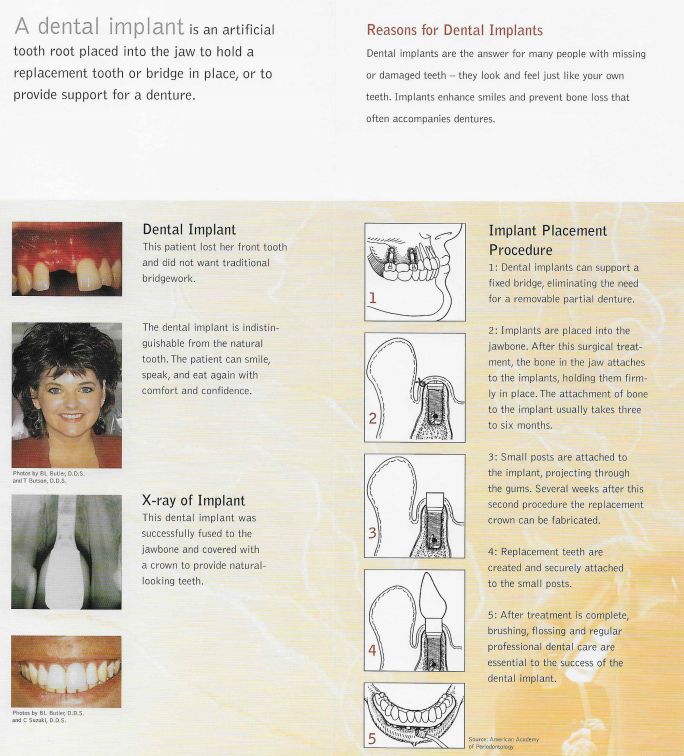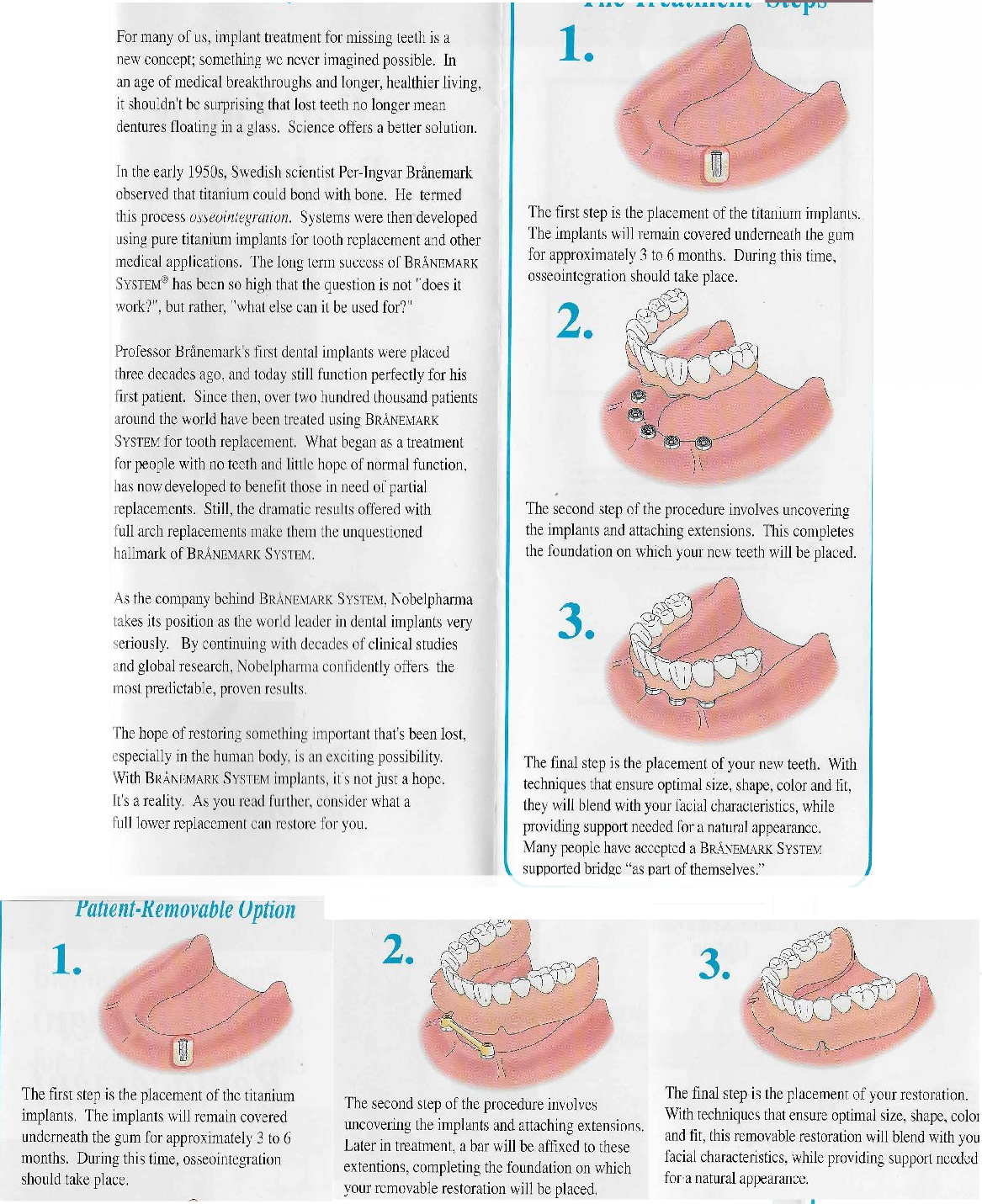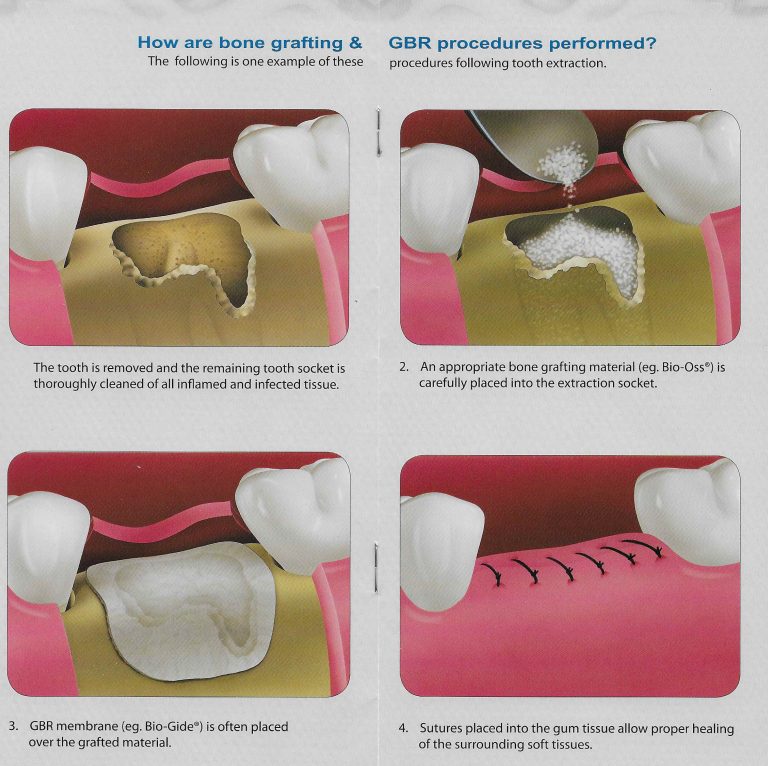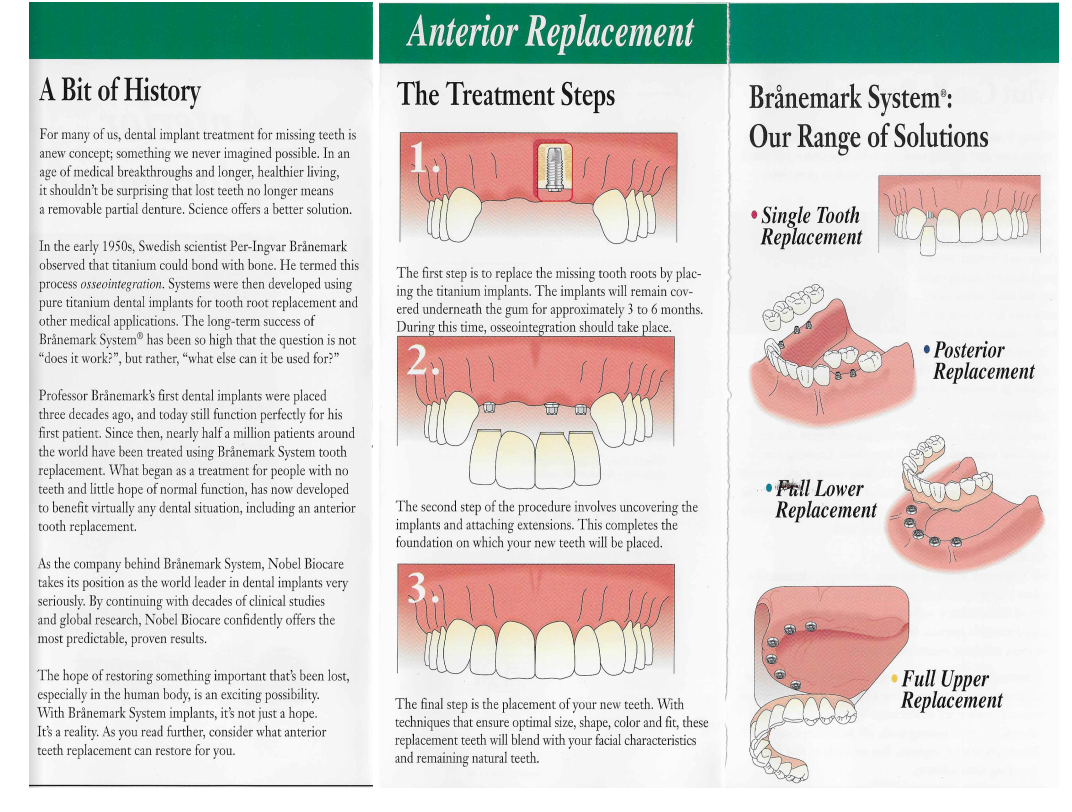Dental Implants
Your confidence in your smile and teeth is vital to a healthy self image. Right now you might be hiding your smile because you are missing a tooth or several teeth.
Perhaps you have trouble chewing and dentures are a constant worry. Dental Implants solve these problems and restore confidence and comfort.
A dental implant is an artificial tooth root placed into your jaw to hold a replacement tooth or bridge in place. While high-tech in nature, dental implants are actually more tooth-saving than actual bridge work, since implants do not rely on neighboring teeth for support.
Dental Implants look and feel and look so natural, you'll think they're your own! Please read about the four types of implant procedures.
Read More about Same Day Implant Services
Replacing a Tooth
If you are missing a single tooth, one implant and a crown can replace it. A dental implant replaces both the lost natural tooth and its root.

What are the advantages of a single-tooth implant over a bridge?
A dental implant provides several advantages over other tooth replacement options. In addition to looking and functioning like a natural tooth, a dental implant replaces a single tooth without sacrificing the health of neighboring teeth. The other common treatment for the loss of a single tooth, a tooth-supported fixed bridge, requires that adjacent teeth be ground down to support the cemented bridge.
Because a dental implant will replace your tooth root, the bone is better preserved. With a bridge, some of the bone that previously surrounded the tooth begins to resorb (deteriorate). Dental implants integrate with your jawbone, helping to keep the bone healthy and intact.
In the long term, a single implant can be more esthetic and easier to keep clean than a bridge. Gums can recede around a bridge, leaving a visible defect when the metal base or collar of the bridge becomes exposed. Resorbed bone beneath the bridge can lead to an unattractive smile. And, the cement holding the bridge in place can wash out, allowing bacteria to decay the teeth that anchor the bridge.
How will the implant be placed?
First, the implant, which looks like a screw or cylinder, is placed into your jaw. Over the next two to six months, the implant and the bone are allowed to bond together to form an anchor for your artificial tooth. During this time, a temporary tooth replacement option can be worn over the implant site.
Often, a second step of the procedure is necessary to uncover the implant and attach an extension. This small metal post, called abutment, completes the foundation on which your new tooth will be placed. Your gums will be allowed to heal for a couple of weeks following this procedure.
There are some implant systems (one-stage) that do not require this second step. These systems use an implant which already has the extension piece attached. Your periodontist will advise you on which system is best for you.
Finally, a replacement tooth called a crown will be created for you by your dentist and attached to the abutment. After a short time, you will experience restored confidence in your smile and your ability to chew and speak.

Read More about Same Day Implant Services
Replacing Several Teeth
If you are missing several teeth, implant-supported bridges can replace them. Dental implants will replace both your lost natural teeth and some of the roots.
What are the advantages of implant-supported bridges over fixed bridges or removable partial dentures?
Dental implants provide several advantages over other teeth replacement options. In addition to looking and functioning like natural teeth, implant-supported bridges replace teeth without support from adjacent natural teeth. Other common treatments for the loss of several teeth, such as fixed bridges or removable partial dentures, are dependent on support from adjacent teeth.
In addition, because implant-supported bridges will replace some of your tooth roots, your bone is better preserved. With a fixed bridge or removable partial denture, the bone that previously surrounded the tooth root may begin to resorb (deteriorate). Dental implants integrate with your jawbone, helping to keep that bone healthy and intact.
In the long term, implants can be esthetic, functional and comfortable. Gums and bone can recede around a fixed bridge or removable partial denture, leaving a visible defect. Resorbed bone beneath bridges or removable partial dentures can lead to a collapsed, unattractive smile. The cement holding bridges in place can wash out, allowing bacteria to decay teeth that anchor the bridge. In addition, removable partial dentures can move around in the mouth and reduce your ability to eat certain foods.
How will the implants be placed?
First, implants which look like screws or cylinders, are placed into your jaw. Over the next two to six months, the implants and the bone are allowed to bond together to form anchors. During this time, a temporary teeth replacement option can be worn over the implant sites.
Sometimes, a second step of the procedure is necessary to uncover the implants and attach extensions. These small metal posts, called abutments, complete the foundation on which your new teeth will be placed. Your gums will be allowed to heal for a couple of weeks following this procedure.
There are some implant systems (one-stage) that do not require this second step. These systems use an implant which already has the extension piece attached. Your periodontist will advise you on which system is best for you.
Finally, replacement teeth, or bridges will be created for you by your dentist and attached to the abutments. After a short time, you will experience restored confidence in your smile and your ability to chew and speak.
Read More about Same Day Implant Services
Replacing All Teeth
In the past, people missing all of their teeth had no option but dentures. This prosthesis has numerous disadvantages, such as:
- Dentures are uncomfortable and often painful
- Dentures do not look natural, especially when eating
- As the bone continues to melt away, the dentures become loose, and can fall out when
- --laughing, sneezing, or coughing without the use of adhesives
- People without their teeth and supporting bone visibly age much faster. Wearing dentures usually undermines a person's self confidence (they have missing--body parts and do not feel complete or natural)
- People with dentures cannot eat certain foods, such as steak, corn on the cob and apples
- People with dentures generally have bad breath

These problems can be solved with implant supported replacement teeth, which are stable (securely fastened to the implants) and maintain the integrity of the facial structures by preserving the bone. Some of the many advantages of implant supported replacement teeth include the following:
- They are more comfortable and stable than traditional dentures
- They virtually stop the bone resorption process (deterioration)
- Integrity of the facial structures is maintained
- Appearance is improved
- It is not necessary to cover the roof of the mouth, so food can be tasted
- Relines and repairs are infrequent compared to traditional dentures
- Natural biting and chewing capacity is restored.

Read More about Same Day Implant Services
Sinus Augmentation
A key to implant success is the quantity and quality of the bone where the implant is to be placed.
The upper back jaw has traditionally been one of the most difficult areas to successfully place dental implants due to insufficient bone quantity and quality and the close proximity to the sinus. If you've lost bone in that area due to reasons such as periodontal disease or tooth loss, you may be left without enough bone to place implants.
Sinus augmentation can help correct this problem by raising the sinus floor and developing bone for the placement of dental implants. Several techniques can be used to raise the sinus and allow for new bone to form. In one common technique, an incision is made to expose the bone. Then a small circle is cut into the bone. This bony piece is lifted into the sinus cavity, much like a trap door, and the space underneath is filled with bone graft material. Your periodontist can explain your options for graft materials, which can regenerate lost bone and tissue.
Finally, the incision is closed and healing is allowed to take place. Depending on your individual needs, the bone usually will be allowed to develop for about four to 12 months before implants can be placed. After the implants are placed, an additional healing period is required. In some cases, the implant can be placed at the same time the sinus is augmented.
Sinus augmentation has been shown to greatly increase your chances for successful implants that can last for years to come. Many patients experience minimal discomfort during this procedure.
Ridge Modification

A key to implant success is the amount and quality of the bone where the implant is to be placed.
Deformities in the upper or lower jaw can leave you with inadequate bone in which to place dental implants. The defect may have been caused by periodontal disease, wearing dentures, developmental defects, injury or trauma. Not only does this deformity cause problems in placing the implant, it can also cause an unattractive indentation in the jaw line near the missing teeth that may be difficult to clean and maintain.
To correct the problem, the gum is lifted away from the ridge to expose the bony defect. The defect is then filled with bone or bone substitute to build up the ridge. Your periodontist can tell you about your options for graft materials, which can help to regenerate lost bone and tissue.
Finally, the incision is closed and healing is allowed to take place. Depending on your individual needs, the bone usually will be allowed to develop for about four to 12 months before implants can be placed. In some cases, the implant can be placed at the same time the ridge is modified.
Ridge modification has been shown to greatly improve appearance and increase your chances for successful implants that can last for years to come. Ridge modification can enhance your restorative success both esthetically and functionally.
Extraction With Bone Regeneration


